Registration of public notification
If you register your e-mail address, we will notify you when the latest issue is published. If you wish, please register from the registration form. To delete your registration, please visit here.
October 2025 No.101
Since the 1990s, communication technology has rapidly advanced, and specifically, the digitization of broadcasting has greatly accelerated the convergence of communication and broadcasting. This evolution has popularized broadcasting and video playback on mobile terminals, leading to a tremendous increase in wireless communication demand. Our company has been developing our business by utilizing GaN-HEMT and advanced signal processing technology to achieve high efficiency in high-power amplifiers for mobile base stations in communication systems. This paper focuses on the digital and analog signal processing technologies that form the basis of these communication systems, highlighting the currently widely used Orthogonal Frequency Division Multiplexing (OFDM) system. It also describes the technological development of communication systems, amplifiers, and GaN-HEMT models, along with future prospects.
3.7 MB

3.7 MB
With the rapid development of AI technology, autonomous driving is becoming a reality. To achieve this, it is important to have a comprehensive view of road and parking area conditions. However, achieving sufficient coverage is challenging because probe information is limited by data privacy concerns and road sensors are installed only on major roads. To address these challenges, we proposed an algorithm to detect vehicles using monochromatic images observed by an all-weather radar called Synthetic Aperture Radar (SAR). We evaluated the algorithm by comparing its results on SAR satellite images with vehicle counts obtained through visual inspection. This paper reports the results and discusses the challenges encountered in the process.
1.8 MB

1.8 MB
As production numbers of battery electric vehicles (BEVs), plug-in hybrid electric vehicles (PHEVs), and hybrid electric vehicles (HEVs) increase, the development of eAxle, which integrate motors, gears, and inverters, is accelerating. Although busbars currently dominate power supply harnesses to eAxle motors, there is a growing demand for flexible cables that offers superior vibration resistance and greater design freedom. Thus, we developed an easily deployable flexible cable, specifically for the power supply of oil-cooled eAxle motors. We selected fluoro rubber as the flexible insulating material due to its excellent resistance to ATF, which serves as both a refrigerant and a lubricant. However, we faced challenges in balancing flexibility with properties such as abrasion resistance and the prevention of adhesion between insulating materials. We addressed these issues by achieving the fine dispersion of crystalline components to enhance abrasion resistance and by controlling molecular mobility through cross-linking to reduce the adhesion of insulations. Through this study, we were able to develop a cable that meets the ISO 200°C rating, has ATF resistance and flexibility, and put it on the market.
1.5 MB
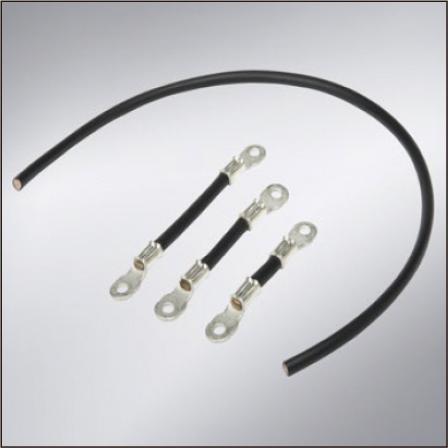
1.5 MB
The NTT proposes the IOWN concept as the next generation of information and communications infrastructure, characterized by low latency (1/200), high capacity (125 times greater transmission capacity), and energy efficiency (100 times improved power efficiency) based on an all-photonics network (APN). Through the activities of the IOWN Global Forum (IOWN GF), diverse companies from various industries worldwide participate in discussions regarding technologies and use cases for social implementation. These discussions are then presented to standardization organizations. Particularly, this enhanced low latency aims to facilitate previously impossible video services and contribute to advancements in data center configurations and financial systems. The Broad Networks (BNS) Division is actively developing foundational technologies and products for new market opportunities. As part of this effort, we developed an ultra-low latency media converter (LLMC) that leverages the characteristics of the IOWN APN. This paper reports on the design philosophy and the measured low latency performance achieved in accordance with the target specifications defined in the IOWN GF AI-assisted Entertainment Interactive Live Music (ILM) use case.
1.9 MB
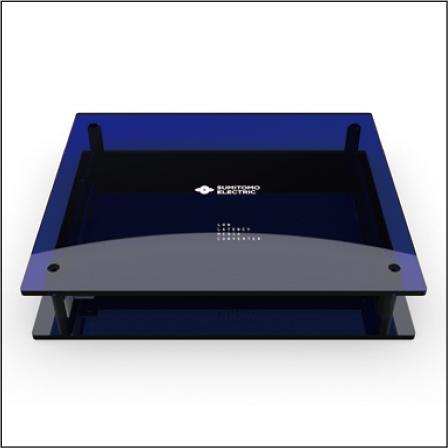
1.9 MB
This paper describes the structure, characteristics, and workability of the highly functional small-diameter 6912-fiber-count outdoor/indoor cable (small-diameter 6912-fiber-count O/I cable) designed for Data Center (DC) applications. This cable incorporates the conventional 200 μm fiber with a 12-fiber Freeform Ribbon, and a 16-fiber Freeform Ribbon suitable for parallel transmission used for AI and in DCs. To achieve a smaller diameter, we developed a central tension member (TM)-type spacer cable named “X-treme Spacer Cable.” This structure eliminates the bending directionality, which is also a characteristic of conventional spacer types, while successfully achieving a reduction in diameter and making the most of its excellent installation workability. With a non-preferential bend axis, this cable can easily be installed in space-constrained areas. Additionally, we developed a highly flame-retardant and low-smoke outer jacket material called Low Smoke Zero Halogen (LSZH), which has passed the stringent UL riser fire safety standards in North America. The use of this cable is expected to significantly reduce installation time and costs for DC optical wiring.
5.4 MB

5.4 MB
As the utilization of generative AI expands, the volume of information communication within data centers (DCs) is continuously increasing, and demands for long-distance communication such as that between DCs and trunk lines is also on the rise. Coherent optical communication technology is primarily used for this long-distance information communication. In anticipation of the widespread adoption of 800 Gbit/s digital coherent optical communication, we developed a 128 Gbaud optical modulator driver integrated circuit (IC) and a transimpedance amplifier (TIA). These ICs are required to achieve gain peak characteristics and variable gain functionality, in addition to high-speed operation matching the modulation speed of the optical signal. This report presents the IC design techniques and evaluation results necessary to achieve this performance.
2.6 MB
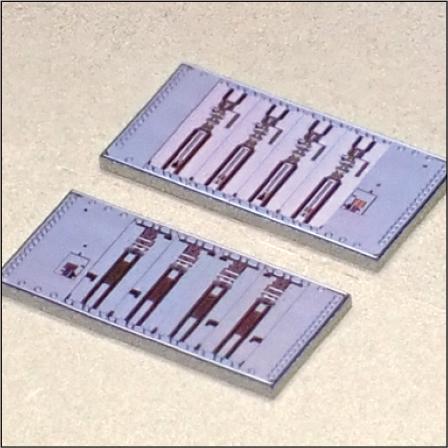
2.6 MB
Electron beam irradiation technology has been used in various industrial processes, including enhancing the heat resistance of wire coatings through cross-linking and improving the flowability of rubber sheets for tires. NHV Corporation has supplied numerous electron beam processing systems (EPS) within an extensive energy range of 100 kV to 5 MV to customers globally. In pursuit of the sustainable development goals, there is growing demand for environmental considerations, worker safety, and equipment downsizing. In response, NHV Corporation reports on the development of a new compact EPS (EB-XW) that drastically reduces the use of hazardous lead and enhances maintenance safety.
3.3 MB

3.3 MB
Recently, the introduction of renewable energy such as solar power generation and wind power generation has been progressing in order to achieve carbon neutrality. However, the amount of power generated by renewable energy sources fluctuates depending on weather conditions, so storage battery systems are being used for grid stabilization. In addition, there is a growing need to cut peak power demand in factories, to implement power leveling during the day and night, and to supply power during blackouts. To reward these requirements, Nissin Electric Co., Ltd. has developed a new type of power conditioning system for storage batteries. We introduce these topics in this report.
2.3 MB
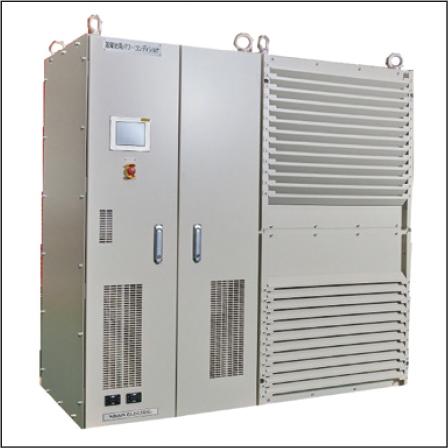
2.3 MB
Laser welding is increasingly used across various industries, especially in the automotive sector, due to rising demands for vehicle weight reduction and electrification. It is known that improvements in processing quality, such as reduced spatter, can be achieved by irradiating metal materials with a dual beam consisting of a center beam and a ring beam. While one method to achieve this involves introducing an oscillator capable of outputting dual beams, another method uses a beam-splitting diffractive optical element (DOE). The first approach faces the challenge of high implementation costs, while the second approach faces the challenge of the inability to adjust the intensity ratio of the dual beams, respectively. To address these challenges, Sumitomo Electric Hardmetal Corp. developed the Adjust-Shaper, which retrofits existing single beam systems to enable dual beam output and allows for flexible adjustment of the intensity ratio. This paper presents the product features and evaluation results from its implementation in a laser processing head.
2.3 MB
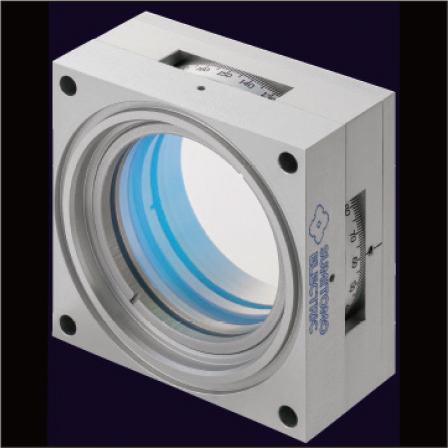
2.3 MB
Our company has traditionally relied on manual visual inspections for defect detection, which required considerable manpower and often led to inconsistencies in inspection standards depending on individual inspectors. To address these issues, we developed an AI-based visual inspection system to automate defect detection. However, a key challenge was the limited availability of defective product images for training, which impeded the enhancement of detection accuracy. To resolve this, we introduced an image generation AI capable of producing a large number of synthetic defective images from a small number of real defective samples. Furthermore, we developed a complementary method to analyze and identify the types of images that the inspection AI system is prone to misclassifying, thereby pinpointing its weaknesses. By generating targeted images to address these weaknesses and iteratively training the inspection AI system in a focused manner—a process we term the “anti-weakness training loop"—we were able to significantly improve system performance. Consequently, even with limited real defect data, we shortened the development time and enhanced the detection accuracy of the visual inspection AI system. This paper reports on the development and results of this approach.
2.9 MB
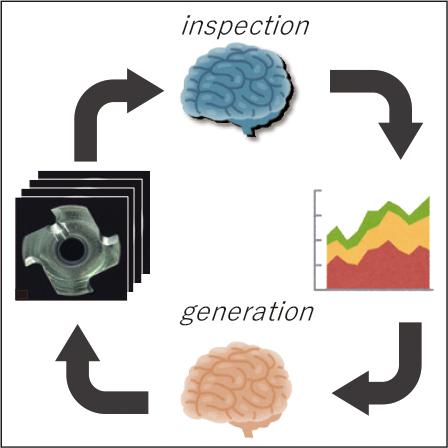
2.9 MB
We are developing and operating AI systems for automated visual inspection of products using image data. Implementing such AI in manufacturing environments presents two main challenges: First, substantial manpower is required to prepare the necessary image data and its accompanying annotations (labeled data) for AI development. Second, the basis of AI inspection results is not visualized, hindering trust in the factory setting. To address the first challenge, we applied self-supervised learning to the Transformer AI architecture, a method also adopted by ChatGPT, minimizing the need for extensive annotations. For the second challenge, we developed a function to incorporate human knowledge into AI by utilizing our novel sigmoid attention mechanisms to clarify the areas of focus. Our original sigmoid attention, adopted as a method of utilizing attention, not only enhances the visualization of the grounds for AI judgments but also contributes to performance improvement. We report our solutions to the two challenges in detail.
2.5 MB

2.5 MB
Active optical cable (AOC) are optical harnesses equipped with photodetectors that enable long-distance high-speed transmission of optical signals (e.g., 100 m, 40 Gbps) over multimode fiber. In recent years, there has been increasing attention in the medical and industrial machinery sectors for the replacement of metal wiring with AOCs using optical fibers to suppress electrical noise in high-speed signal transmission paths. However, in certain applications, metal wiring is still necessary for power supply and other needs, making hybrid AOCs that combine metal wires and optical fibers essential. Additionally, with the miniaturization of devices and an increase in moving parts within the same sectors, there has been a growing demand for robust mechanical reliability in wiring materials. Yet, the difference in mechanical reliability between optical fibers and metal wires has become a concern. This report introduces the Unbreakable Active Optical Cable (UB-AOC), developed by enhancing the mechanical reliability of metal wires, which are generally less reliable than optical fibers. We have implemented a specialized resin coating on our proprietary Thick Copper Covered (TCC) wire.
1 MB
Currently, data center (DC) construction is progressing to accommodate the rapid increase in traffic due to the emergence of generative AI and machine learning. By interconnecting multiple DCs, data can be shared, and services such as backup and redundancy can be provided. To realize these services, it is necessary to install optical cables in outdoor underground ducts that connect distant DCs, and there is an expectation that many fibers can be efficiently deployed within these space-limited ducts in a short term. In this context, Sumitomo Electric Lightwave Corporation has commercialized new outdoor/indoor hybrid cables (OI cables) ranging from 288–3,456 fibers by changing the cable design from conventional central tube cable to Monotube Cable, resulting in a drastic reduction in cable outer diameter and weight compared to previous designs.
0.7 MB
In recent years, the use of microwaves for heating applications has been expanding, not only in consumer applications such as food heating in microwave ovens but also in industrial processes including food processing, drying of materials like wood and resins, as well as plasma generation in semiconductor equipment. Traditionally, magnetrons have dominated the field of microwave heating due to their low cost and high output as vacuum tube components. However, Gallium Nitride High Electron Mobility Transistors (GaN HEMTs) have garnered attention in recent years due to their long lifespan, high reliability, and low noise characteristics. Additionally, GaN HEMTs offer high controllability of phase, frequency, and output power, enabling the realization of new heating functions such as uniform heating and selective heating.
0.8 MB
Shipboard radar is used for navigation, collision avoidance, and weather monitoring, with operating frequencies varying according to application, including X-band and S-band. In recent years, there has been an expected increase in radar demand due to a growing emphasis on safety aimed at automated navigation. Among this trend, there is a shift from vacuum tube components, such as magnetrons, to solid-state components like Gallium Nitride High Electron Mobility Transistors (GaN HEMTs). This shift is driven by the fact that vacuum tube components have a relatively short replacement cycle of 1 to 2 years due to their limited lifespan, which contributes to rising operational costs. In contrast, solid-state components offer long-term reliability of over 10 years, eliminating the need for regular replacements like those required for magnetrons. Additionally, technologies such as pulse compression enable solid-state components to achieve radar performance equal to or exceeding that of magnetrons with lower power consumption, leading to expectations of continued demand growth.
0.7 MB
Copyright of the paper contained in SUMITOMO ELECTRIC TECHNICAL REVIEW belongs to Sumitomo Electric Industries, Ltd.
The paper is to be used solely for private, reference purpose, and reproduction without the permission of the copyright holder is prohibited.
Meet the Authors of the SUMITOMO ELECTRIC TECHNICAL REVIEW
We at Sumitomo Electric Group are driven to pursue technological innovations to create value for a better world.
Learn more
